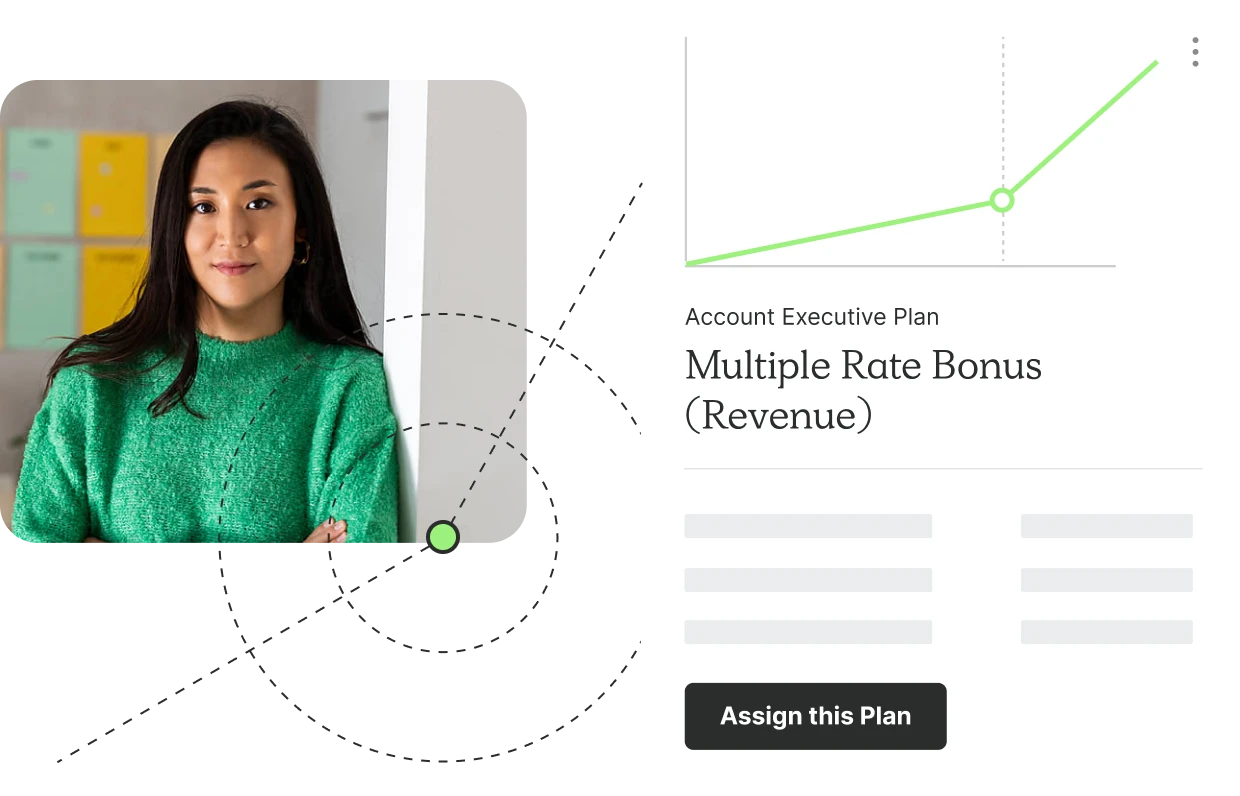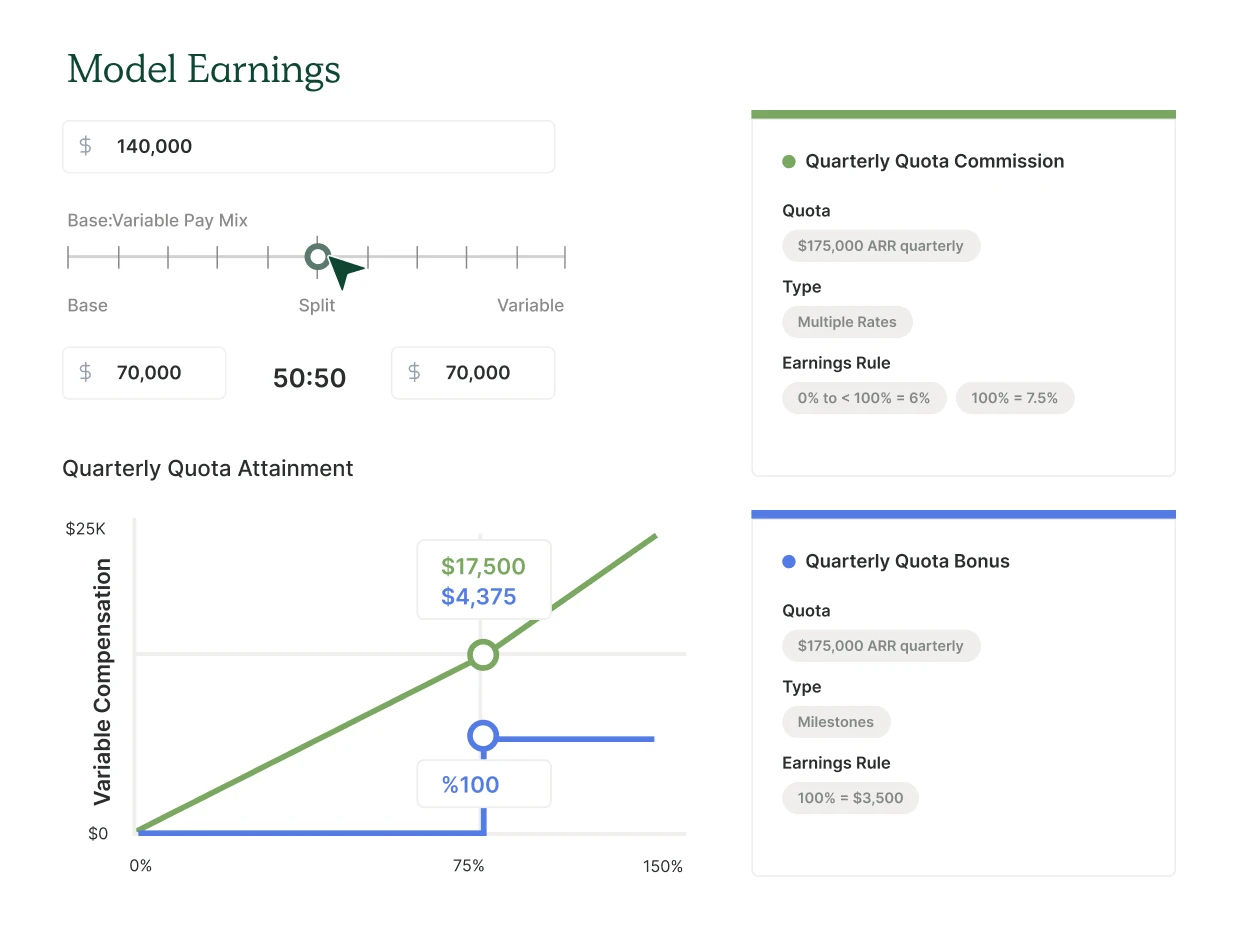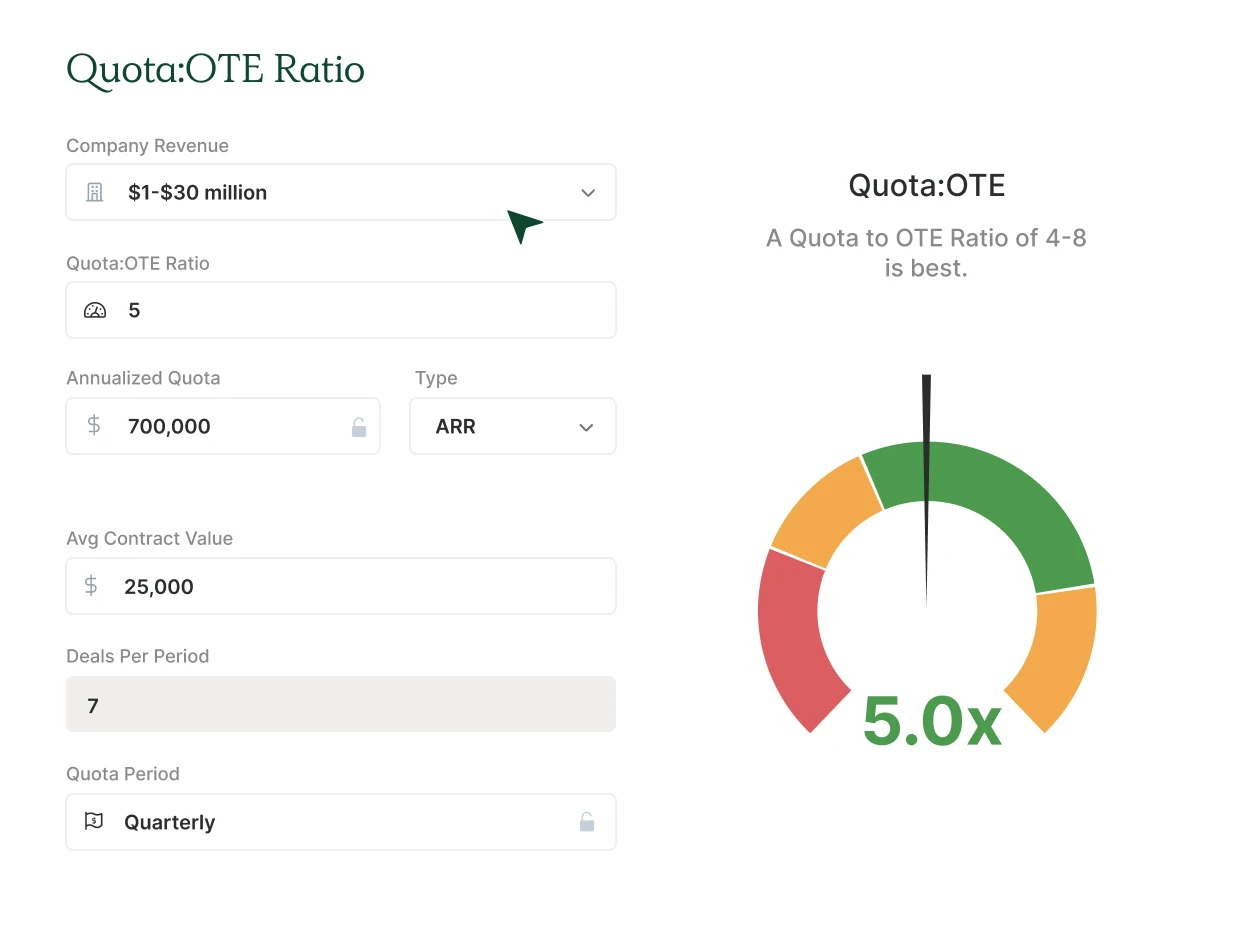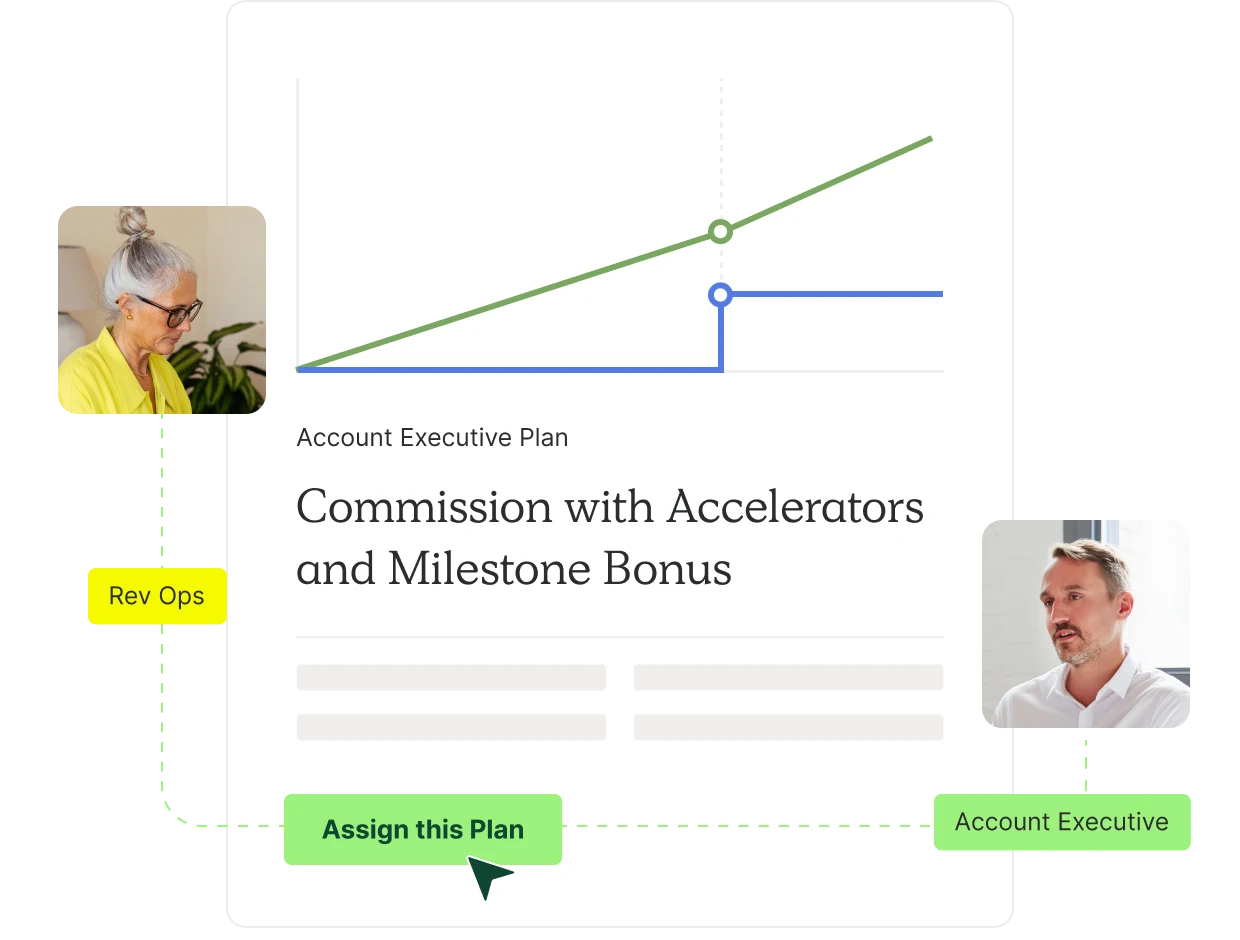Sales with high seasonality and adjusted quotas throughout the year
Multiple Rate Bonus (Revenue)
This compensation plan template extends on the Single Rate Bonus plan by offering a higher bonus rate after the rep surpasses quota. There is risk if a high seasonality of business leads to a high effective rate on deals during slower months.

When to use this plan?
Why use a Multiple Rate Bonus (Revenue) plan?
Motivates and rewards reps for over performance, plus it’s easy to understand and execute
Customize the Commission with Multiple Rate Bonus Plan Template
Start your free trial to view the plan template and model and forecast plan performance based on your business. Make it your own by adding team members and connecting your deal data.
Forecast earnings & plan performance
See potential earnings based on your inputs and goal attainment progress.

Check the health of your Quota:OTE ratio
Use the calculator to quickly measure how realistic, attainable, and healthy your OTE to quota ratio is.

Streamline plan management
Assign the plan to your team and automate sales commission calculations. Be confident your team is being paid fairly and accurately.

How to adjust this compensation plan template
To customize this plan, you will input these 7 variables.
On-Target Earnings (OTE)
OTE combines base salary with variable pay and represents the total amount of money your reps can expect to earn if they hit 100% of quota.
Pay Mix
Refers to the percentage of a salesperson’s total compensation, made up of base salary, commission, and other incentives. The most common pay mix in SaaS is 50/50.
Company Revenue
Revenue is the total amount of income that a company generates from its primary operations. In SaaS, annual recurring revenue is one of the most important metrics.
Quota:OTE Ratio
This ratio quantifies how much larger a quota is to a sales rep’s OTE. The most common multiplier in SaaS is a quota 5x that of the OTE, but this will vary based on size and stage of the company.
Annualized Quota
An annualized quota is a sales goal that is set for a year.
Average Contract Value
Often abbreviated to ACV, this number represents the average deal size that your company sells.
Quota Period
Your quota period sets the frequency at which your team’s quota resets. In SaaS, the most common quota period is quarterly. However, this number will vary based on your sales cycle.
Frequently asked questions
How is sales bonus calculated?
For attainment point-based bonuses, calculate how much of the total bonus the rep earns based on the percentage of quota the rep achieved. For an example of an attainment point-based bonus, a rep has a monthly quota of $10,000. If they achieve 100% of quota, the rep collects a bonus of $1,000. However, if they only sell $6,000 of their total quota, the rep would earn a partial bonus of $600 versus the full $1,000. To take it one step further for the Multiple Rate Bonus (Revenue), should the rep continue to bring in revenue after hitting quota, the rep unlocks an additional bonus rate 1.5x the original rate. Meaning if they hit 110% of quota, they get the $1,000 bonus for the first 100% of quota and another $150 bonus for the additional 10% of quota attainment.
When would you use a multiple-rate bonus?
There are a few reasons why you might use a multiple-rate bonus. For example, if your reps’ quotas change every period due to seasonality but you want to maintain the same bonus every period, this plan is right for you. That way you don’t have to change commission rates every quarter/month
How does this differ from a milestone bonus?
Reps earn a milestone bonus after meeting a stipulation in which they are paid a set amount as a result of their efforts. These bonuses do not change if the rep is below or above these requirements. Meaning, anything less than the quota, and the rep earns no variable pay. Plus, the rep is not eligible for additional sales incentive compensation within the same quota term after earning the first bonus. With a Multiple Rate Bonus (Revenue), however, the rep receives the same, predetermined bonus rate on revenue generated between 0-100 percent of quota and earns a higher set bonus rate after passing quota. No cap.
What’s the difference between sales commissions and bonuses?
Sales commissions differ from sales bonuses in that bonuses are based on a set amount of money for completing a task. Commissions, on the other hand, consist of a percentage of the total revenue from a deal. For example, If a rep gets 10% of every deal closed, that’s commission. If a rep earns $300 for every deal they close, that’s a bonus — a single rate bonus!
What are some common sales compensation best practices?
When it comes to sales compensation and commissions calculations best practices, the best thing you can do as a leader is clearly communicate the methodology behind your sales compensation model to your team. A close second would be to provide every stakeholder tied to commissions with a single source of truth that democratizes the often siloed commission process.
What is a typical bonus sales structure?
Companies usually implement a commission bonus or an MBO “manage by outcome bonus.” Sometimes both! In the case of a sales commission bonus, a flat bonus is offered and rewarded for meeting a sales quota or based on revenue attainment points.
Explore similar compensation plans

Commission with Accelerators
The most popular account executive commission structure in SaaS, this plan rewards over performance. Works best when you’re confident about your quotas and targets.

Single Rate Bonus (Revenue)
This comp plan works great for businesses with quotas that change throughout the year but the variable remains, like those that sell into education.

Commission with Accelerators & Decelerators
This comp plan works best when you’re very confident in your targets. But, if you see a lot of variability or seasonality between quota periods, like ecommerce, this won’t work as well.
What industry leaders say
Manage compensation & track commissions with QuotaPath
Deliver visibility, automation, and seamlessness across the entire compensation process.